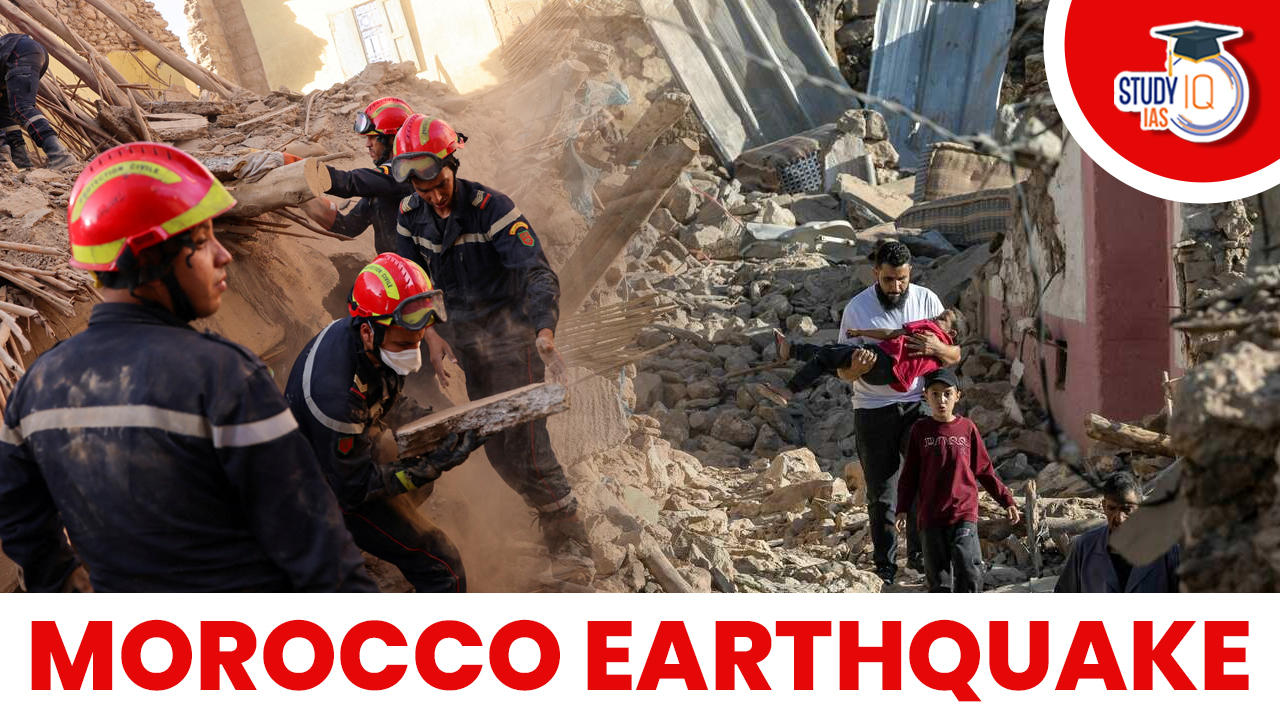Table of Contents
Morocco Earthquake 2023
Morocco recently faced a devastating natural catastrophe that shook its High Atlas mountains and left a lasting mark on the nation. This catastrophic event, which struck with significant force, had profound consequences for the people, communities, and the country as a whole. It serves as a stark reminder of the unpredictable and destructive power of nature, and in this article, we will delve into the details of the recent Morocco Earthquake 2023.
What are Earthquakes?
Earthquakes are natural disasters that can have devastating consequences, and the history of seismic activity in these areas underscores the importance of preparedness, response, and international support in times of crisis. You can also check here Earthquakes in India.
Morocco Earthquake Location
The Morocco earthquake in 2023 occurred in the High Atlas mountains. Specifically, its epicentre was located in an area called Ighil, which is about 40 miles southwest of the city of Marrakech. This region is known for its rugged terrain and mountainous landscapes. The earthquake’s location in the mountains had a significant impact on the way it affected nearby communities and posed challenges for rescue and relief efforts due to its remote nature.
Morocco Earthquake Map
To the north of Morocco, there’s the Eurasian Plate, which includes Europe and extends into Asia. To the south of Morocco, there’s the African Plate, which covers most of the African continent. These plates are like gigantic chunks of Earth’s crust that can move slowly over time.
The Morocco earthquake happened because these two plates were constantly pushing against each other. When they get stuck and then suddenly release that built-up pressure, it causes the Earth’s surface to shake, resulting in an earthquake. This is a common occurrence in regions where tectonic plates meet, like Morocco, and it’s why earthquakes can happen in these areas.

Morocco Earthquake 2023 in Detail
Morocco Earthquake Magnitude
In September 2023, Morocco experienced a devastating earthquake in the High Atlas mountains. This earthquake had a magnitude of 6.8, making it the most powerful to hit the country in 120 years. The epicentre of the earthquake was located in the Ighil area, which is about 40 miles southwest of the city of Marrakech.
Morocco Earthquake Death Toll
The impact of the Morocco earthquake was severe, leading to significant loss of life and widespread destruction. At least 2,012 people tragically lost their lives in the quake, and over 2,059 others were injured, with more than 1,400 in critical condition. The death toll was expected to rise as rescuers faced challenges reaching remote mountain villages that were the hardest hit by the disaster.
Marrakesh Earthquake
Marrakesh, the major city nearest to the epicentre, experienced substantial damage. Some buildings, including a part of a historic minaret, collapsed. Additionally, the city’s famous 12th-century Koutoubia mosque suffered damage, though the extent was not immediately clear. Streets were blocked by piles of rubble and debris, and parked cars were crushed.
In response to the disaster, Morocco declared three days of national mourning, during which the national flag was flown at half-mast. The Moroccan armed forces were mobilized to provide affected areas with essential supplies such as clean drinking water, food, tents, and blankets. King Mohammed VI authorized the country’s armed forces to oversee aid efforts, demonstrating a coordinated response to the crisis.
Despite diplomatic tensions, neighbouring Algeria offered support by opening its airspace for the transport of humanitarian aid to Morocco and providing aid resources. This gesture of solidarity was significant given the strained relations between the two nations.
Morocco’s susceptibility to earthquakes is due to its location between the African and Eurasian tectonic plates. In 2004, Morocco experienced another major earthquake, measuring 6.3 in magnitude, in the town of Al Hoceima on its northern coast, which resulted in the loss of over 600 lives.
Overall, the 2023 Morocco earthquake was a tragic event that had a profound impact on the country, resulting in loss of life, injuries, and widespread damage. The response from both the Moroccan government and the international community highlighted the need for support and assistance in times of such natural disasters.
Read about: Component of Environment
Morocco Earthquake History
Here are some of the significant earthquakes in Morocco and some neighbouring regions over the past 25 years, including the most recent earthquake in 2023:
| Date | Location | Magnitude | Death Toll |
| Sept. 8, 2023 | Morocco (High Atlas mountains) | 6.8 | 2,100+ |
| Feb. 6, 2023 | Turkey and Syria | 7.8 | 21,600+ |
| April 25, 2015 | Nepal | 7.8 | 8,800+ |
| March 11, 2011 | Japan (triggered tsunami) | 9.0 | 18,400+ |
| Jan. 12, 2010 | Haiti | 7.0 | 100,000+* |
| May 12, 2008 | China (Sichuan) | 7.9 | 87,500+ |
| May 27, 2006 | Indonesia (Java) | 6.3 | 5,700+ |
| Oct. 8, 2005 | Pakistan (Kashmir) | 7.6 | 80,000+ |
| Dec. 26, 2004 | Indonesia (triggered tsunami) | 9.1 | 230,000+ |
| Dec. 26, 2003 | Iran (southeastern) | 6.6 | 20,000+ |
| Jan. 26, 2001 | India (Gujarat) | 7.6 | 20,000+ |
| Aug. 17, 1999 | Turkey (Izmit) | 7.6 | 18,000+ |





















 WhatsApp
WhatsApp